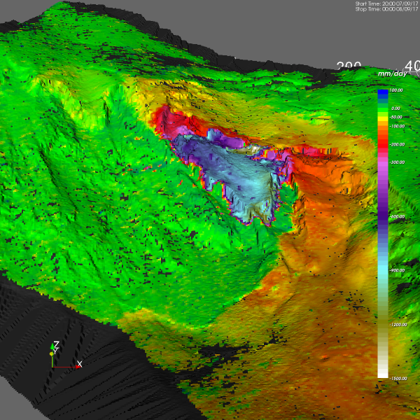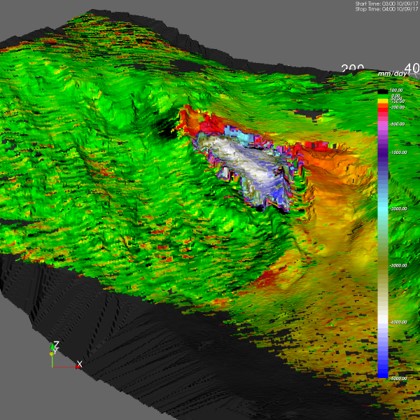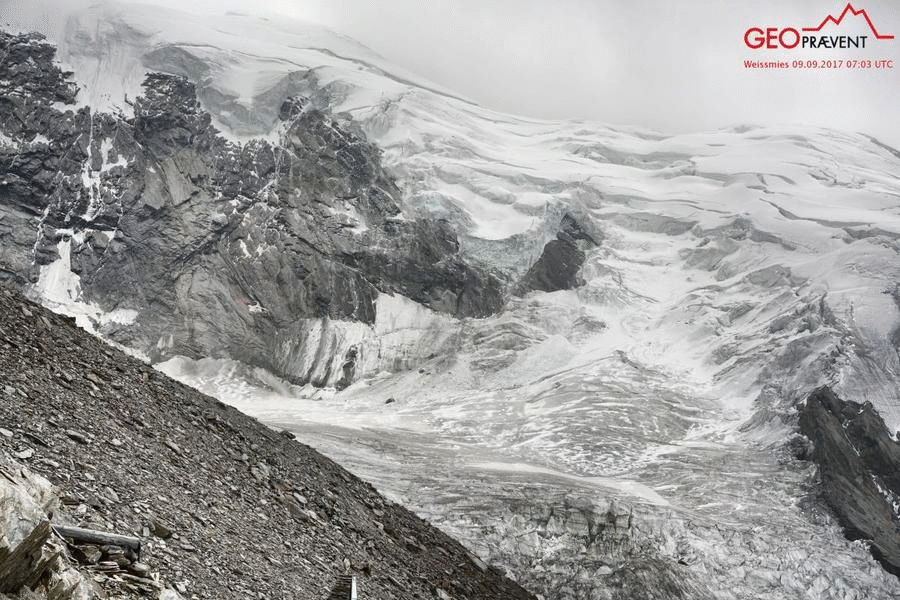Correct prediction of glacier collapse with radar measurements
Earlier this year, the radar was removed from this monitoring location. After 2.5 years of continuous radar operation, the instrument was replaced by an HD-camera for deformation monitoring by image analysis in spring 2017. A few months later, the deformation analyses showed a distinct acceleration of the unstable glacier area under surveillance. Whereas the HD-camera is a convenient and cost-effective method for long-term monitoring, its deformation analysis is not precise enough for the assessment of urgent hazards (see a comparison of the two technologies here). Additionally, the weather turned bad when the flow rate increased sharply and visual image analysis was impossible.
Radar provides reliable data at any time
Hence, we reinstalled the interferometric georadar on 7 September 2017. A few hours afterwards, it was already fully operational and measured the initial flow rate of 80 cm/day. Two days later, on 9 September, this value had duplicated and it became obvious the glacier collapse was imminent. Velocity analysis and the assessments of glacier expert Prof. Martin Funk of VAW/ETH Zurich indicated the most likely time of collapse would be the following morning (10 September 2017).

Figure 1: Radar image of 8 September 2017, midnight: The flow rate reached 80 cm/day.

Figure 2: Radar image of 10 September 2017, 4 AM: The flow rate increased to 3.6 m/day shortly before the collapse.

